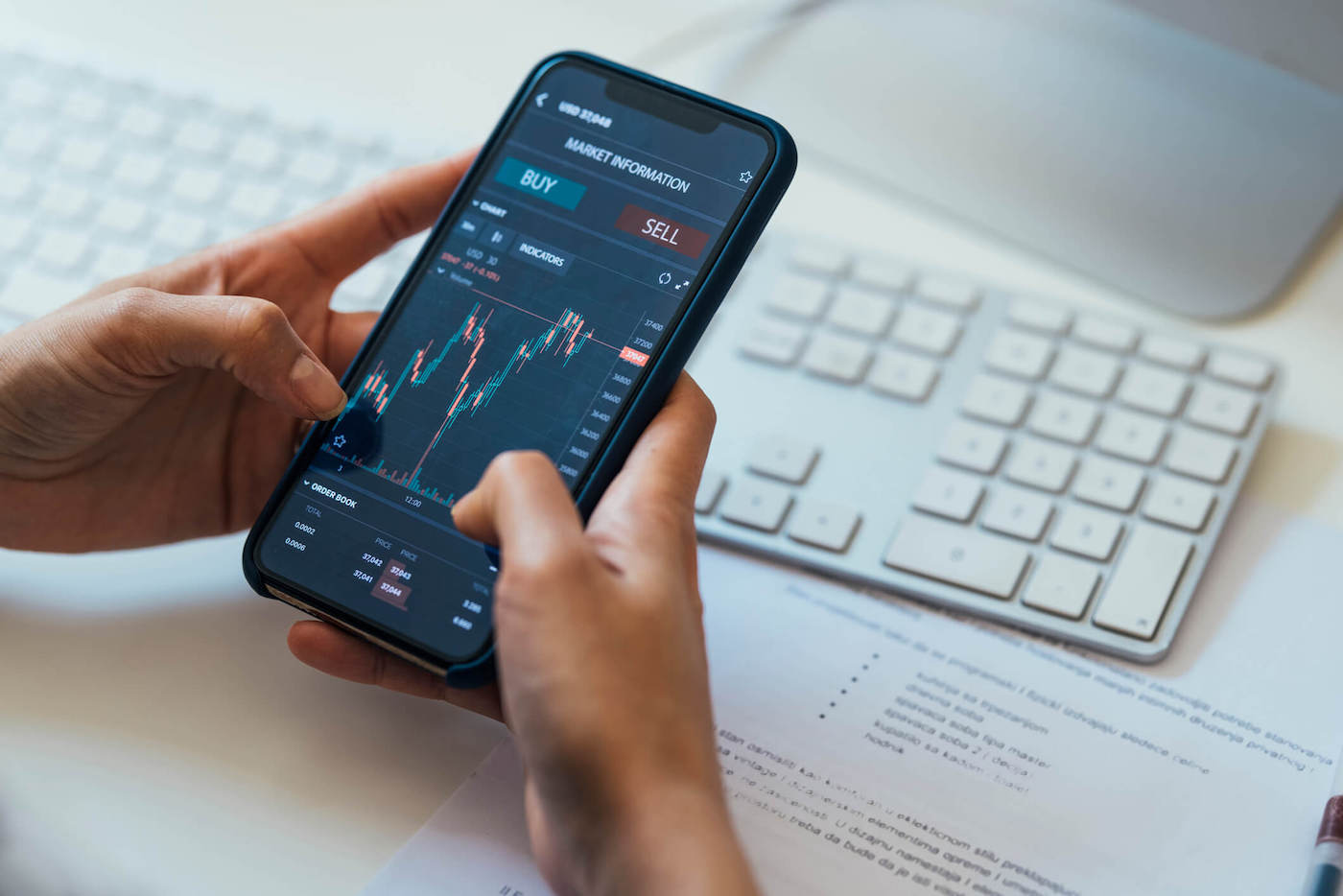

Finance
What Is Buying Power In Stocks
Published: January 18, 2024
Learn what buying power in stocks means in finance and how it can impact your investment strategy. Gain insight into maximizing your purchasing potential
(Many of the links in this article redirect to a specific reviewed product. Your purchase of these products through affiliate links helps to generate commission for LiveWell, at no extra cost. Learn more)
Table of Contents
Introduction
Buying power is a concept that holds great importance in the world of stock trading and investing. It refers to the amount of capital an individual or organization possesses to purchase securities in the stock market. Understanding buying power is crucial for investors and traders as it influences their ability to execute trades, take advantage of market opportunities, and manage risk.
When it comes to stock trading, having sufficient buying power can make a significant difference in the success of one’s investments. It allows individuals to take advantage of market movements, participate in initial public offerings (IPOs), and diversify their portfolios. On the other hand, lack of buying power can limit one’s ability to enter or exit positions, potentially causing missed opportunities or unwanted losses.
As the stock market continues to grow and evolve, investors must understand the concept of buying power and how it impacts their investment decisions. This article will provide a comprehensive overview of buying power in stocks, including its definition, factors affecting it, the importance of understanding margin and leverage, strategies to maximize buying power, and the risks associated with its use.
Definition of Buying Power
Buying power, in the context of stock trading, refers to the amount of capital available to an investor or trader to purchase securities. It represents the financial capacity a trader has to enter into trades and take advantage of investment opportunities.
Buying power is determined by several factors, including the amount of cash in the trading account and the margin available. Cash buying power refers to the amount of cash available for immediate use in purchasing securities, while margin buying power includes both the cash in the account and the amount that can be borrowed from the broker through margin trading.
Margin accounts allow traders to leverage their buying power by borrowing money from the broker to make larger trades than they could with their available cash alone. The amount that can be borrowed is determined by the margin requirements set by the broker, which may vary based on factors such as the trader’s account balance and the securities being traded.
It’s important to note that buying power is distinct from net worth. While net worth represents the total value of an individual’s assets minus their liabilities, buying power specifically refers to the funds available for trading activities.
For example, if an investor has $50,000 in cash and a margin buying power of $100,000, they have a total buying power of $150,000. This means they can invest up to $150,000 in securities, taking into account both their cash and the borrowing capacity provided by the margin account.
Understanding the concept of buying power is crucial for traders as it dictates their ability to enter and exit positions, pursue various trading strategies, and capitalize on market opportunities. With higher buying power, traders can potentially generate greater returns, diversify their portfolios, and take advantage of short-term market fluctuations.
However, it’s important to use buying power wisely and responsibly, as excessive borrowing and leverage can significantly increase the risks involved in trading. Traders must have a solid understanding of risk management and be aware of the potential consequences of using margin buying power.
Factors Affecting Buying Power in Stocks
The buying power of an investor or trader in the stock market can be influenced by several key factors. Understanding these factors is crucial for assessing and managing one’s buying power effectively. Here are some important factors that can impact buying power:
- Account Balance: The amount of cash in a trading account is one of the primary determinants of buying power. A higher account balance provides greater buying power, allowing traders to make larger investments in the stock market.
- Margin Requirements: Margin accounts offer traders the ability to leverage their buying power by borrowing funds from the broker. The margin requirements set by the broker determine the maximum amount that can be borrowed and, therefore, impact the overall buying power of the trader.
- Securities Held: The type and quality of securities held in a trader’s portfolio can also affect their buying power. Some brokers may assign a higher margin requirement to certain securities deemed more volatile or risky, which can reduce the overall buying power in the account.
- Volatility of the Market: Market volatility can impact buying power, especially in margin accounts. During periods of high volatility, brokers may adjust margin requirements on certain securities, potentially reducing the available buying power. Traders should be aware of how market conditions can affect their ability to trade and adjust their strategies accordingly.
- Margin Calls: Margin calls can significantly impact buying power. When the value of securities held in a margin account declines, the account may fall below the broker’s required minimum account balance. This can lead to a margin call, where the trader is required to either deposit additional funds or liquidate positions to meet the margin requirements, thus reducing their buying power.
- Regulatory Restrictions: Regulatory bodies may impose restrictions on trading activities, affecting buying power. For example, some regulators may enforce restrictions on margin trading or impose limitations on buying certain types of securities, which can impact a trader’s ability to leverage their buying power.
By considering these factors, traders can assess their buying power accurately and make informed decisions regarding their investment strategies. It’s essential to regularly review and adapt to changes in buying power to optimize trading opportunities and manage risk effectively.
Understanding Margin and Leverage
Margin and leverage are two important concepts in stock trading that directly impact buying power. Understanding how these terms work is crucial for traders looking to maximize their potential returns and manage their risk effectively.
Margin: Margin refers to the practice of borrowing funds from a broker to trade securities. Margin accounts allow traders to leverage their buying power and potentially make larger investments than the cash they have available. Margin is typically expressed as a percentage, representing the portion of the total investment that the trader must provide in cash, while the remaining portion is borrowed from the broker.
For example, suppose a trader wants to purchase $10,000 worth of stocks on margin, and the margin requirement is set at 50%. In this case, the trader would need to have $5,000 in cash (50% of $10,000) and can borrow the remaining $5,000 from the broker.
Leverage: Leverage is the ability to control a larger position in the market with a relatively smaller amount of capital. It allows traders to magnify their potential returns but also comes with increased risk. The degree of leverage is determined by the margin requirements set by the broker.
Using margin and leverage can significantly enhance buying power, allowing traders to potentially generate higher profits. However, it’s important to note that leverage can also amplify losses, as losses are calculated based on the total value of the position, not just the amount invested.
Traders must carefully consider the risks associated with margin and leverage before utilizing these strategies. Excessive borrowing and over-leveraging can lead to significant losses if the market moves against the trader’s position. It’s crucial to have a solid risk management plan in place and to understand the potential consequences of using margin and leverage.
In addition, brokers may have specific rules and requirements regarding margin trading, such as maintenance margin levels and margin calls. Traders should familiarize themselves with their broker’s margin policies and ensure they have sufficient funds to meet margin requirements and avoid margin calls.
Overall, understanding margin and leverage is essential for traders looking to maximize their buying power and take advantage of potential market opportunities. However, it’s important to approach margin trading with caution and only use leverage within one’s risk tolerance levels and trading strategy.
Importance of Buying Power in Stock Trading
Buying power plays a crucial role in stock trading and can have a significant impact on the success and profitability of traders. Here are some key reasons why buying power is important:
- Capital Utilization: Buying power allows traders to utilize their available capital efficiently. By maximizing buying power, traders can make larger investments and potentially generate higher returns. This enables them to take advantage of market opportunities and capitalize on favorable price movements.
- Participation in IPOs: Initial Public Offerings (IPOs) can be promising investment opportunities, but they often require a substantial upfront investment. Having sufficient buying power allows traders to participate in IPOs and potentially benefit from the early price appreciation that often occurs.
- Diversification: Buying power enables traders to build diversified portfolios. By having the ability to invest in multiple securities across different sectors and asset classes, traders can spread their risk and potentially increase their chances of earning consistent profits over time.
- Reacting to Market Conditions: The stock market can be volatile, and opportunities to buy or sell securities can arise suddenly. With higher buying power, traders are better equipped to react quickly to market conditions and capitalize on favorable trading opportunities.
- Applying Trading Strategies: Certain trading strategies, such as day trading or swing trading, rely on taking advantage of short-term price movements. Having adequate buying power allows traders to execute these strategies effectively, as they can enter and exit positions swiftly, potentially generating profits from quick market fluctuations.
- Offsetting Trading Costs: Trading commissions and fees can eat into traders’ profits. With higher buying power, traders can offset these costs by making larger trades. This can help improve their profitability and potentially increase their overall returns.
Having sufficient buying power is a key advantage in the competitive world of stock trading. It allows traders to take advantage of market opportunities, diversify their portfolios, and apply trading strategies effectively. However, it’s important to use buying power responsibly and with a sound risk management plan. Traders should always consider their risk tolerance, investment goals, and market conditions before utilizing their buying power to make trading decisions.
Strategies to Maximize Buying Power
To make the most of their buying power in stock trading, traders can employ a variety of strategies that can help optimize their capital utilization and potentially enhance their returns. Here are some effective strategies to maximize buying power:
- Save and Accumulate Capital: Increasing your available capital is the most straightforward way to maximize buying power. Regularly saving and accumulating funds in your trading account can provide more resources to invest in the market.
- Use Margin Trading Wisely: Margin trading allows traders to leverage their buying power, but it should be used judiciously and within one’s risk tolerance. Understanding the potential risks and implications of margin trading is crucial to avoid excessive leverage that can lead to significant losses.
- Trade Options: Options trading offers the potential to control a larger amount of shares with a smaller investment. By trading options strategically, traders can effectively maximize their buying power and potentially generate higher returns.
- Employ Short-Term Trading Strategies: Short-term trading strategies, such as day trading or swing trading, aim to take advantage of quick price movements. These strategies allow traders to free up their buying power more swiftly and potentially generate profits from frequent trades.
- Focus on High-Reward Opportunities: Identifying high-reward opportunities can help maximize buying power. By focusing on securities with strong growth potential or undervalued stocks, traders can make targeted investments that have the potential for higher returns, effectively utilizing their buying power for optimal gains.
- Consider Margin Optimization: Traders can optimize their margin usage by managing their positions effectively. Applying risk management techniques, such as setting stop-loss orders and diversifying holdings, can help minimize losses and maximize buying power while protecting against unfavorable market movements.
- Regularly Review and Adjust: Market conditions and opportunities can change over time. Traders should regularly review their investment strategies, assess their buying power, and make necessary adjustments to optimize their capital utilization based on current market trends.
Maximizing buying power requires a combination of careful planning, market analysis, and disciplined execution. Traders should consider their risk tolerance and investment goals while employing these strategies to align their trading activities with their overall financial objectives. It’s important to remember that maximizing buying power is not solely about taking on more risk, but rather about using available resources effectively to capitalize on market opportunities while managing risk responsibly.
Risks Associated with Buying Power
While buying power can provide traders with opportunities to maximize their potential returns, it also carries inherent risks that must be carefully considered. Understanding and managing these risks is crucial for maintaining a sustainable and successful trading strategy. Here are some key risks associated with buying power:
- Overleveraging: Utilizing excessive leverage can amplify both gains and losses. While leverage allows traders to control larger positions with a smaller investment, it also increases the potential for significant losses. It is important to use leverage responsibly and within one’s risk tolerance.
- Market Volatility: Fluctuations in the stock market can impact buying power and investment performance. During periods of high volatility, asset prices can experience rapid and unpredictable movements, which can lead to increased risk and potential losses if not managed properly.
- Margin Calls: In margin trading, a decline in the value of securities held can result in a margin call. When a margin call occurs, traders are required to deposit additional funds or liquidate positions to meet the minimum account balance requirements. Failure to meet a margin call can result in forced position liquidation and potential losses.
- Unforeseen Events: Unexpected events, such as economic crises or geopolitical developments, can cause market disruptions and impact buying power. These events can lead to rapid price fluctuations and increased volatility, potentially resulting in significant losses for traders.
- Higher Trading Costs: Increasing buying power may involve larger trade sizes, which can result in higher trading costs, including commissions and fees. Traders need to consider these costs when evaluating the profitability of their trades and ensure they do not outweigh potential gains.
- Poor Risk Management: Failing to implement proper risk management strategies can expose traders to unnecessary risks. Without effective risk management measures, such as setting stop-loss orders or diversifying holdings, traders may suffer significant losses and diminish their buying power.
- Lack of Knowledge and Experience: Insufficient knowledge and experience in stock trading can also pose risks when utilizing buying power. Without a solid understanding of market dynamics, investment principles, and trading strategies, traders may make unwise decisions that can lead to losses and compromise their buying power.
It is crucial for traders to be aware of these risks and take appropriate measures to mitigate them. This includes conducting thorough research, implementing risk management techniques, diversifying investments, and continuously educating themselves about market conditions and trading strategies.
By understanding and managing the risks associated with buying power, traders can navigate the markets more effectively, preserve their capital, and enhance the long-term success of their trading endeavors.
Conclusion
Buying power is a fundamental concept in stock trading that directly impacts an investor’s ability to participate in the market, pursue investment opportunities, and manage risk. Understanding and effectively utilizing buying power can make a significant difference in the success and profitability of traders.
Throughout this article, we have explored the definition of buying power and its importance in stock trading. We have discussed the factors that influence buying power, such as account balance, margin requirements, and market volatility. We have also delved into the concept of margin and leverage, highlighting how they can enhance buying power but also expose traders to increased risks.
Moreover, we have covered strategies to maximize buying power, including saving and accumulating capital, using margin trading wisely, considering options trading, employing short-term strategies, focusing on high-reward opportunities, optimizing margin usage, and regularly reviewing and adjusting trading approaches.
However, it is essential to recognize the risks associated with buying power, such as overleveraging, market volatility, margin calls, unforeseen events, higher trading costs, poor risk management, and lack of knowledge and experience. Traders must be mindful of these risks and take appropriate measures to mitigate them to safeguard their capital and long-term success.
In conclusion, buying power is a critical aspect of stock trading, enabling investors to make informed investment decisions, diversify portfolios, and potentially capitalize on market opportunities. By understanding buying power, employing effective strategies, and managing associated risks, traders can optimize their capital utilization, achieve desired investment goals, and navigate the dynamic world of stock trading with greater confidence.














